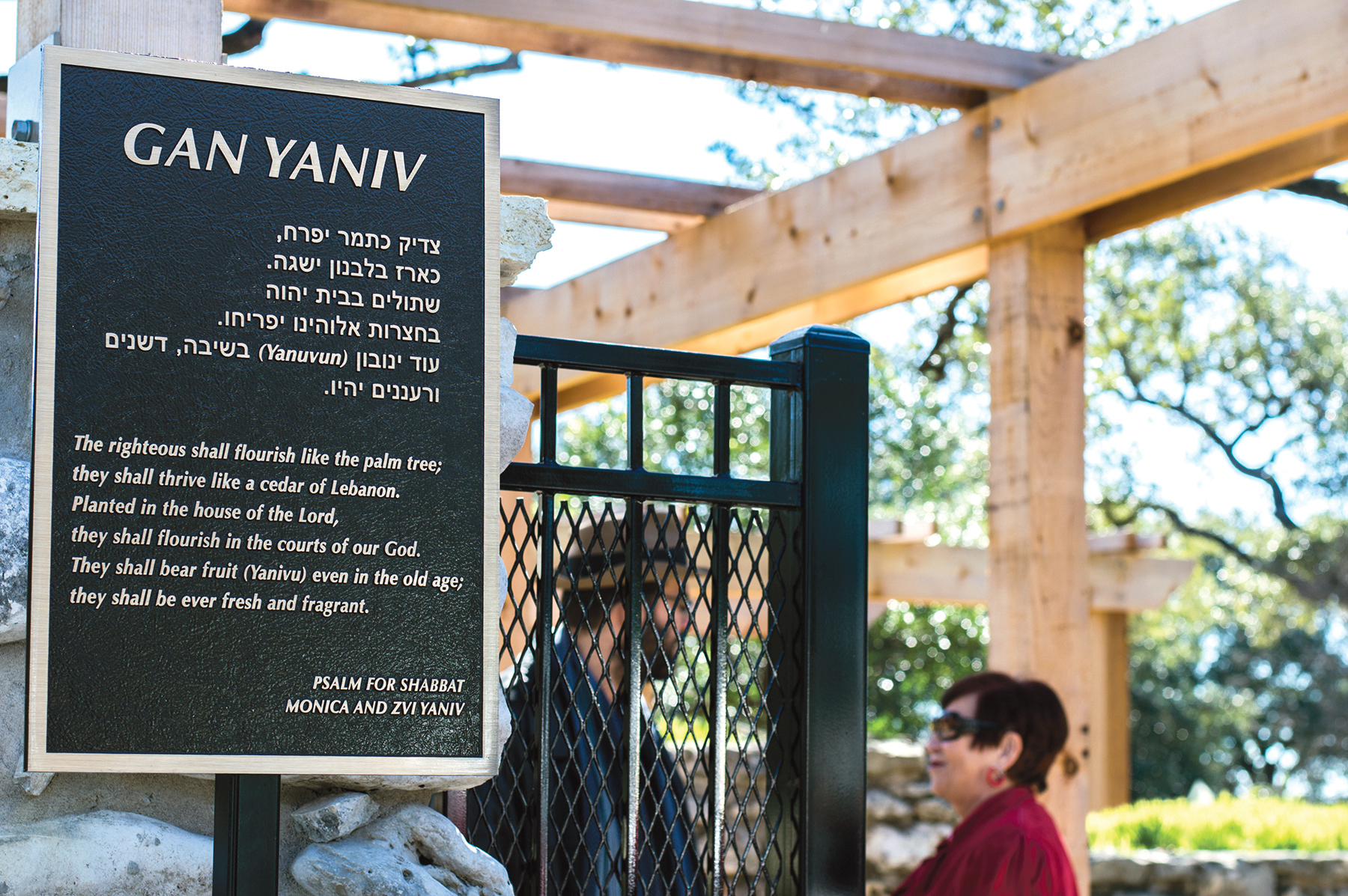Gan Yaniv
Inspired by Texas "Ruins"
The idea for Gan Yaniv was inspired by a walk through the campus of the Dell Jewish Community Center in Austin, Texas. I was strolling through an undeveloped area on the east side of the campus and came across what looked like an old pile of stones. The limestone pavers are remnants from the original dwelling on the land, owned by the Hart family from which Hart Lane, where the campus is located, derives its name.
When Jay Rubin, the Jewish Federation of Greater Austin's CEO and I explored the land together, we discovered that the stones which originally caught my attention were, in fact, leftover fragments from a small waterfall and pool that had been a part of the original homestead's landscape. I told Jay that I wanted to develop this idea and worked with Stacie Engeling, a landscape architect from Green Eye Studio and Craig Powell, a landscape contractor. Together, we came up with a plan to reconstruct this area and transform it into a tranquil garden while still maintaining the original integrity of the existing walls.
"To tell you the truth, when I saw the stones, they reminded me a little bit of Jerusalem."

Bringing a Taste of Jerusalem to Austin
My wife Monica and I decided that we wanted to create a place where the Austin Jewish community could enjoy nature, incorporating a way to preserve the historic nature of the place and at the same time, bring a little taste of Jerusalem stones to Austin.
It was this idea of combining the old and the new that gave rise to the idea of Gan Yaniv. In Hebrew, the word "gan" means "garden." Our last name, "Yaniv," is derived from the word "yanivu," which means "to be fruitful." We understood that given Austin's climate, the garden would do best with native plants indigenous to the area that would thrive without the necessity for a lot of water. We wanted the area to be a meeting place where people could gather for weddings or celebrations and have the feel of an oasis.

Rebecca S. Cohen, "Gan Yaniv Provides an Intimate Oasis on the Dell Jewish Community Center Campus," Shalom Austin, 2014-2015/5775, p. 60-66.